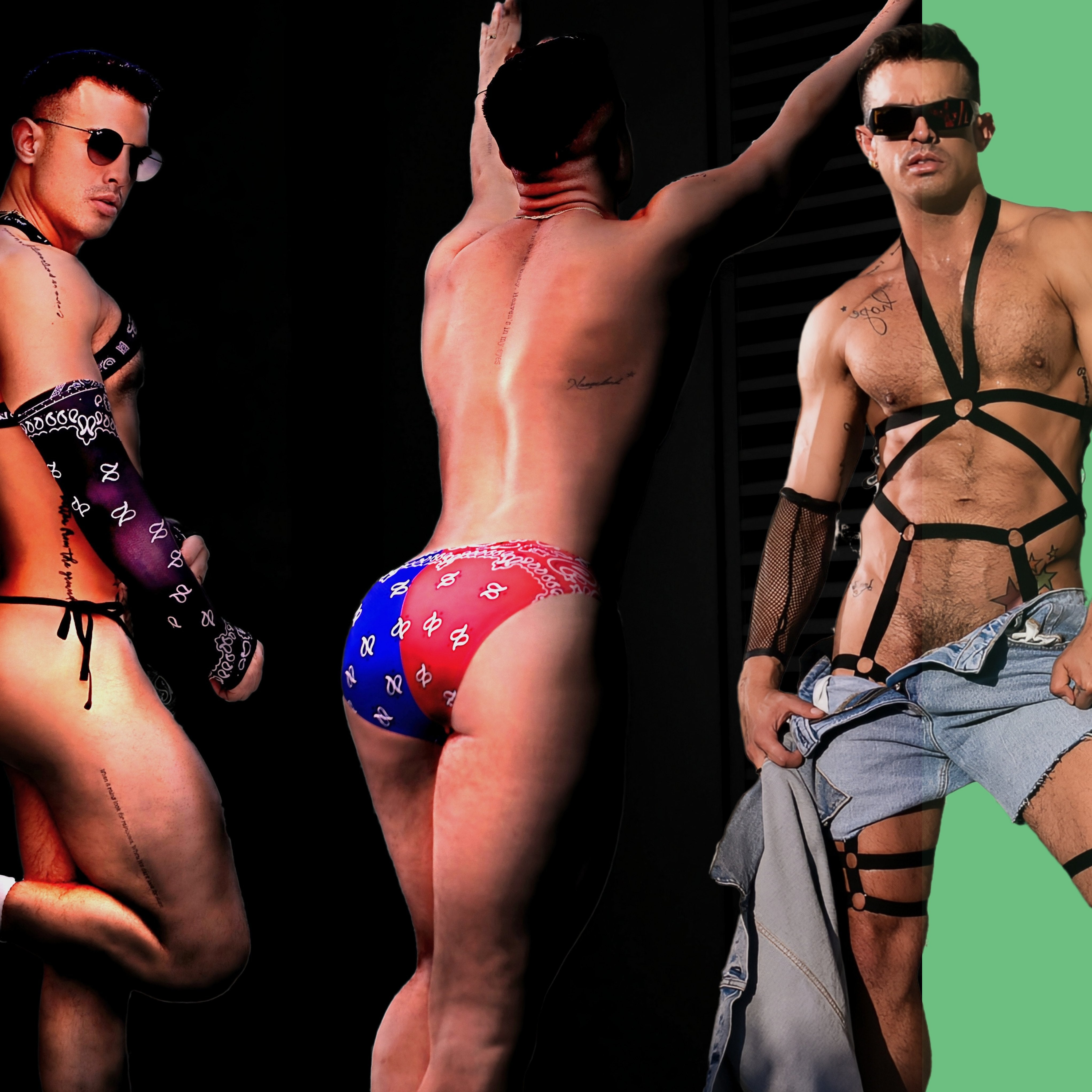
Gay Cruising Culture: From Hidden History to Modern Practices
Gay cruising, the act of seeking sexual encounters in public spaces, has been a significant part of LGBTQ+ culture for centuries. This practice, born out of necessity during times of intense persecution and criminalization of homosexuality, has evolved alongside societal attitudes and technological advancements. Let's dive into the fascinating world of gay cruising, exploring its roots, evolution, and current state.

A Brief History of Gay Cruising |
The origins of gay cruising can be traced back to at least the 17th century in England and Wales. Historian Rictor Norton suggests that the first gay cruising grounds and brothels in London may have appeared in the early 1600s. Theatres were often denounced by moralists of the time as hotbeds of homosexual activity.
However, the first well-documented raid on a gay meeting place occurred much later, in 1810. The infamous case of the Vere Street Coterie saw a group of men arrested at a "molly house" (a term for a meeting place for homosexual men) in London. Six men were convicted of attempted sodomy and subjected to public punishment in the pillory, while two others were tragically hanged.
Despite the risks, gay men continued to find ways to connect. Parks, public toilets (known as "cottages" in gay slang), and other secluded areas became popular cruising spots. The need for discretion led to the development of a complex system of coded gestures and signals, allowing gay men to communicate their interests without drawing unwanted attention.
The Golden Age of Cruising
The 1970s saw an explosion in gay cruising culture, particularly in the United States. As LGBTQ+ visibility increased and some legal restrictions were lifted, more open forms of cruising emerged. Colored handkerchiefs became a popular way to signal sexual preferences and interests. In New York City, areas like the West Side Highway piers became notorious cruising spots, with men gathering in empty tractor-trailers for clandestine encounters.
Other popular cruising locations included The Rambles in Central Park, the Meat Rack on Fire Island, countless parks, truck stops, and public restrooms nationwide. Each area had its own unwritten rules and etiquette, understood by those in the know.
More visible gay spaces also began to appear. The Adonis theatre in midtown Manhattan, described by historian Will Kohler as "a sexual amusement park," exemplified the more open attitude towards gay sexuality in this era.
The Impact of AIDS and Changing Attitudes |
The onset of the AIDS crisis in the 1980s had a profound impact on cruising culture. Bathhouses, once popular cruising spots, came under intense scrutiny and criticism. The perceived risk associated with anonymous sexual encounters increased dramatically, leading many gay men to reassess their sexual practices.

However, the gay community showed remarkable resilience in the face of this crisis. Many of the previously used spaces for cruising were repurposed for fundraising, organizing, and healthcare initiatives. This period demonstrated the strength and adaptability of the LGBTQ+ community in the face of adversity.
Modern Cruising:From Parks to Apps |

As societal acceptance of LGBTQ+ people has grown, so too has the number and visibility of gay bars and clubs. These venues have become essential spaces for the community, offering a safer and more open environment for meeting potential partners.
However, the advent of technology, particularly smartphone apps like Grindr, has revolutionized the way gay men connect. These apps have digitized the cruising experience in many ways, allowing users to browse potential partners and arrange meet-ups from their homes.
Despite this digital shift, traditional cruising spots have remained partially. Parks, beaches, and even some theatres continue to serve as meeting places for men seeking quick, anonymous encounters. For example, the historic Studs Theatre in West Hollywood has operated since the 1940s. It remains one of the few adult theatres left in the United States.

The Culture and Etiquette of Cruising
Cruising culture has developed its own set of norms and etiquette over the years. The ability to communicate interest subtly is crucial. A lingering glance, a casual brush of the hand, or even a discreet crotch grab can signal interest without alerting unsuspecting bystanders.
It's important to note that the specific "language" of cruising can vary by location and subculture. For example, what works in New York City might translate differently in St. Louis. This diversity reflects the diverse fabric of gay subcultures within the broader LGBTQ+ community.

Safety Considerations in Modern Cruising
While cruising can be exciting, it's crucial to prioritize safety. Here are some tips for those exploring this aspect of gay culture:
- Trust your instincts: If something feels off, it probably is. Don't ignore your gut feelings.
- Maintain anonymity: Sharing personal details during casual encounters is unnecessary.
- Know your surroundings: Always have an exit strategy, especially when cruising in public spaces.
- Inform a friend: Share your plans with someone, even if you don't share all the details.
- Read the room: Be aware of your environment and respect others' boundaries.
- Practice safe sex: Use protection and consider preventive measures like PrEP.

The Legal Landscape
It's important to note that while attitudes towards homosexuality have generally become more accepting, public sexual activity remains illegal in most jurisdictions. In England and Wales, for example, the Sexual Offences Act 2003 prohibits all forms of sexual activity in public lavatories. Other public sexual acts can potentially be prosecuted under public order offenses.
The level of police enforcement can vary greatly depending on the location and local attitudes. Some police forces have taken a more community-oriented approach, focusing on protecting cruisers from hate crimes rather than prosecuting them for public indecency.

Cruising in the Digital Age
While traditional cruising spots still exist, many gay men now turn to digital platforms for hookups. Apps like Grindr and websites like Cruizerz.com and Squirt.org have made it easier than ever to arrange encounters. However, these platforms come with risks, including the potential for deception or exploitation.
The Future of Cruising |

As society becomes more accepting of LGBTQ+ relationships and casual sex in general, the need for secretive cruising spots may diminish. However, the thrill of the chase and the excitement of anonymous encounters continue to appeal to many.
Some argue that digitizing cruising through apps has led to a loss of community and face-to-face interaction. Others see it as a safer, more convenient alternative to traditional cruising.
Regardless of how it evolves, cruising remains an integral part of gay cultural history. From the molly houses of 17th-century London to the GPS-enabled apps of today, the desire for connection and sexual expression has driven gay men to find innovative ways to meet each other.
Whether you're more comfortable swiping right on an app or giving a knowing glance in a bar, remember that you're participating in a long and rich tradition of queer culture. The methods may change, but the spirit of cruising – the search for connection, pleasure, and community – remains a vital part of the LGBTQ+ experience.










